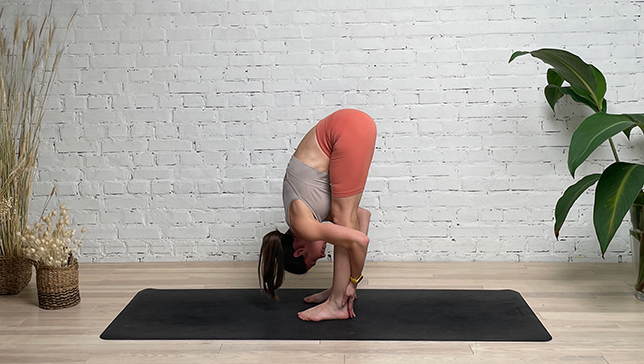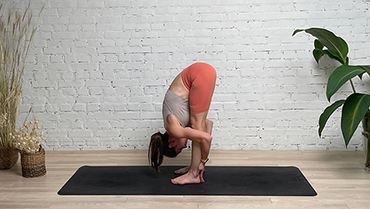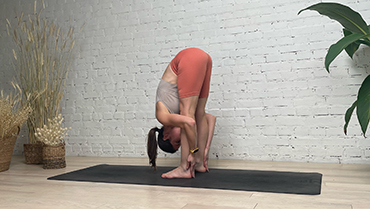Standing Forward Bend Pose - Uttanasana

Contents
In Standing Forward Bend Pose or Uttanasana in Sanskrit (‘Ut’, means ‘intensity’ and the ‘Tan’, means ‘stretch, extend or lengthen out’) the spine is given a deliberate and intense stretch. This yoga pose consists of standing with feet together, bending the upper body at the hips and letting the head hang downwards, and taking control of the body by placing the palms on the floor beside the feet.
This intense forward stretch of the upper body including the spine brings an indirect opening of the hamstring muscles. Standing Forward Bend Pose is considered a base pose as standing forward bend pose variations can be derived from this pose. Standing Forward Bend Pose helps boost energy in the body and hence can be included in flow yoga sequences.
Pose Detail
- Difficulty: Beginners
- By Type: Flexibility Yoga Poses, Pregnancy Yoga Poses
- Body Position: Forward Bend Yoga Poses, Standing Yoga Poses
- By Benefit: Yoga Poses For Digestion, Yoga Poses For Neck Pain, Yoga Poses For Sleep
Step-by-Step Instructions
Benefits and Contraindications
Calms the brain and helps relieve stress and mild depression
Stimulates the liver and kidneys
Stretches the hamstrings, calves, and hips
Strengthens the thighs and knees
Improves digestion
Helps relieve the symptoms of menopause
Reduces fatigue and anxiety
Relieves headache and insomnia
Therapeutic for asthma, high blood pressure, infertility, osteoporosis, and sinusitis
Back injury: Do this pose with bent knees, or perform Ardha Uttanasana (pronounced ARE-dah, ardha = half), with your hands on the wall, legs perpendicular to your torso, and arms parallel to the floor.
Migraine
Hamstring or knee injury
High Blood Pressure
Sciatica
Photo poses in different angles


Modifications and Tips
- If you need a seated practice, try seated forward bend (Paschimottanasana)
- If your hamstrings are tight or you feel strain in your lower back, bend your knees slightly.
- Try bending the knees more and resting the chest along the front of the thighs while you are folded forward.
- More support can be found by using blocks or firm cushions to bring the floor up to meet your hands. Press your hands into these supports to create straight back while keeping the pelvis tilted forward (hinged forward from the hips).
-
Try practicing the pose with your feet hip-width apart to create more space.
Instead of placing your palms on the floor you can hold the backs of your ankles. - Try crossing your forearms and holding your opposite elbows, and let your arms hang relaxed along with your head.
Tips
- Remember this pose is NOT about touching your toes. The goal is anterior pelvic tilt – hinging forward from the hips.
- Focus on lengthening the front torso rather than curving it in towards the legs.
- Press your heels firmly into the floor.
- Lift your sitting bones toward the ceiling.
- Turn the tops of your thighs slightly inward.
- Let your head hang relaxed.
Variations
- Standing Forward Bend on a chair
- Standing Forward Fold Pose Variation Knees Bent
- Half Bound Lotus Standing Forward Bend Variation
- Half Standing Forward Bend with blocks
- Big Toe Pose
- Revolved Half Forward Fold Pose Against Wall
- Half Forward Bend Pose Block Under Feet